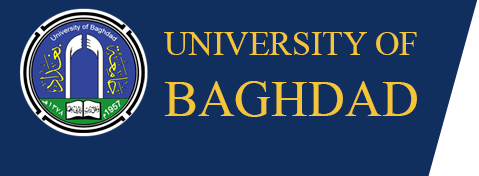Inventors: Dr. Ruqaiba Ali Jijan, Dr. Zeina Mohammed Abdul Qadir, Ikhlas Mohammed Farhan/Ministry of Science and technology, Dr. Jassim Mohammed Udah/Department of Food Sciences, College of Agricultural Engineering Sciences, University of Baghdad
Abstract
This work represented a study of the effect of crude extracts of fungi on adenocarcinoma (Ahmed- Mohammed – Nahi-2003, AMN-3) cell line, the human vitro and in vivo experiment . For the purpose of achieving this goal. The study included four stages. In stage one: The study has also employed an in vitro evaluation of the cytotoxic effect of fungi extract on some cell lines including the murine mammary laryngeal carcinoma (Hep-2) cell line and the rat embryo fibroblast (Ref) cell line, at different concentrations and different treatment exposure time. In stage two: Evaluation of the effect of these extracts in vitro on on several cytogenetic parameters such as mitotic index (MI%), blast index (BI%), The third stage: evaluate preventive activity of aqueous and alcohol extracts on human lymphocyte in vitro by several cytogenetic parameters such as Sister Chromatid Exchange (SE), Cell Cycle rogression (CCP), Replicative Index (RI) Chromosomal aberration (CA) and micronucleus formation (MN) . In stage four: In vivo biological experiments. In stage five ;This work also included study of the therapeutic potential of two extracts, aqueous and alcohol extracts of fungi in the treatment of transplanted murine mammary adenocarcinoma in mice.
The in vitro cell growth assay showed that there was time- and concentration-dependent cytotoxic effects of crude extracts of fungi on Hep2 and AMN3 cell lines without any toxic effect in the normal cells of REF cells. The highest significant effect of these extracts was achieved after 72 hrs of exposure with highest concentration (10000 μg/ml). Both aqueous and alcohol extract of fungi caused growth inhibition percentage for Hep2 through (24, 48, 72 hr.) exposure time ( 48.5% , 64.5% and 89.4 %, respectively) for aqueous extract of fungi . and (37.2%, 56.7% and 78.2%, respectively) for alcohol extract of fungi. However, 72 hrs exposure to crude extracts of fungi at concentration of 10000 μg/ml caused slightly inhibitory effect on REF cell line, reached 21.1% and 17.7% for aqueous and ethanolic extracts of fungi, respectively.
On the other hand, all crude extracts of fungi caused significant reduction in the mitotic index and blast index of peripheral human lymphocytes, but without any structural or numerical chromosomal aberration. Also these extracts neither replaced phytohemagglutin in (PHA) as mitogenic agents, nor colcemid as mitotic arresting agents at metaphase. Cytotoxic assay of extracts on human lymphocyte in vitro, The non cytotoxic concentrations of both fungi extracts aqueous and alcoholic were: 0.1µg/ml and 0.01µg/ml , the resulted improved CCP,increased RI significantly, This Positive effect was decreased of SCE , while the high concentrations resulted decreased of RI and increased of SCE significantly, in addition negative effect of CCP.
when test the protective effect of non cytotoxic concentrations, which included two treatments (before and after drug CP) both extracts showed highly performance in preventing or reducing the genotoxic effect of CP contributed to a decrease in RI and SCE, addition positive effect in CCP, compared with positive control (CP ) . This was supported by the results of a two-dose of study (250 and 300 mg / kg) for both fungal extracts on recording some cytogenetic markers in the bone marrow of the micethrough three types of interactions treatment (before, after, with treatment). the results showed that the both extracts administration confers a protection against damage inflicted by CP by decreased chromosomal aberration and micronucleus formation . The positive effect was overt when fungi extracts were used as (pre-CP) and (with-CP) treatments, and to less extent in (post-CP) treatment, So the fungi extracts can be considered as Desmutagens at the first degree and Bioantimutagens at the second degree.
The therapeutic doses of both aqueous and alcoholic were determined according to LD50 in mice. The results indicated high effectiveness of both extracts in a dose- and time-dependent manner. respectively. The comparison of relative tumor volumes of different groups revealed very significant differences among all treated groups and those of untreated (control) group. Treated mice with the high and medium doses of aqueous extraction show high reduction ( 86.6 % and 64.5 % ) while the low doses show partial reduction with 52.1 % growth inhibition. The result indicate that treated mice by high doses (1.5 g/kg) of methanol extraction (77.8%) . Reduction by the medium dose (0.7 g/kg %) was 68.612 %. The low dose (0.4 g/k) reduction with growth was 47.5 %. The highest therapeutic doses of aqueous and alcoholic of fungi ( and 2.3 g/kg and 1.5 g/kg , respectively) showed the best therapeutic effect by decreasing the tumor volume in mice to about 99% and 98%.

